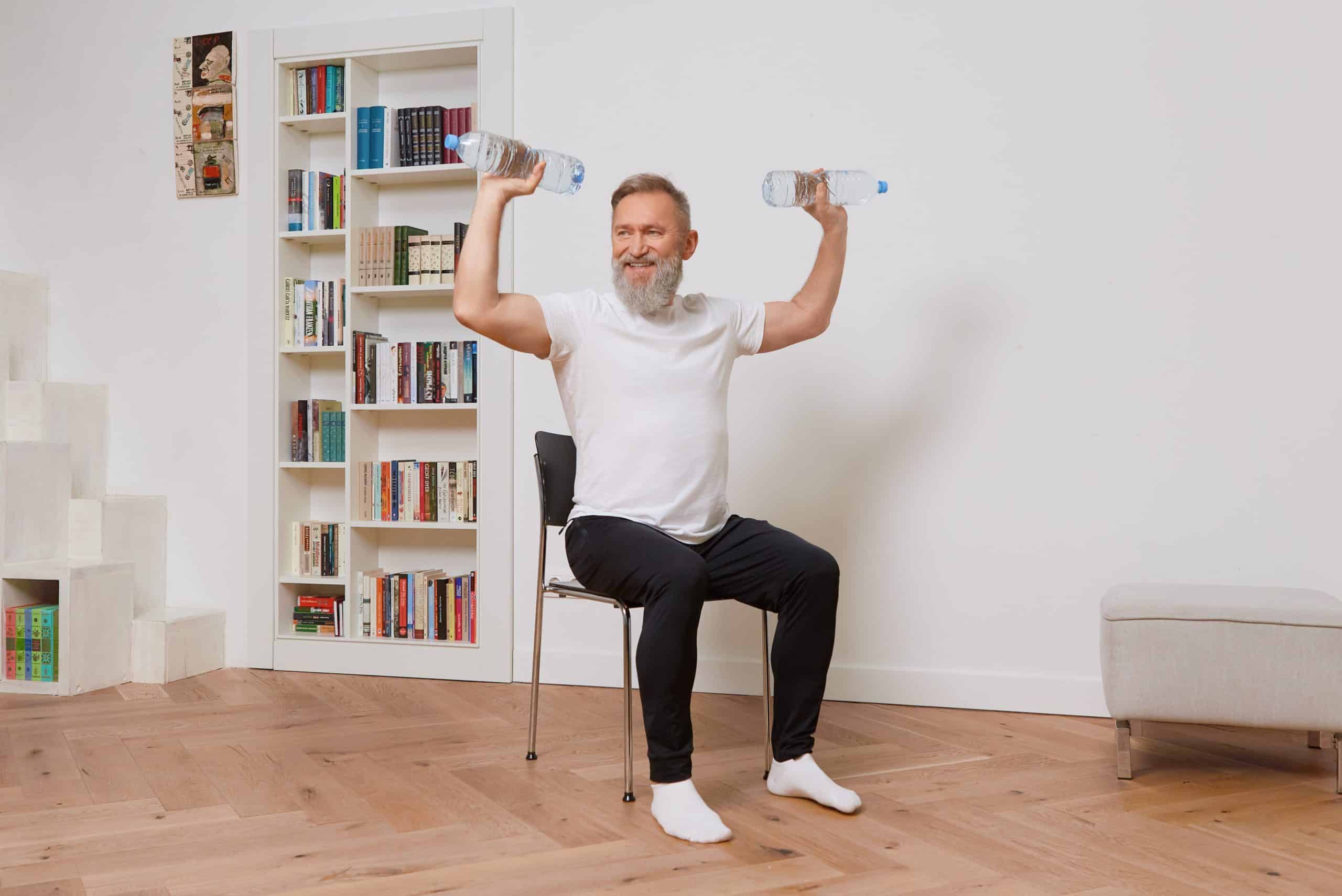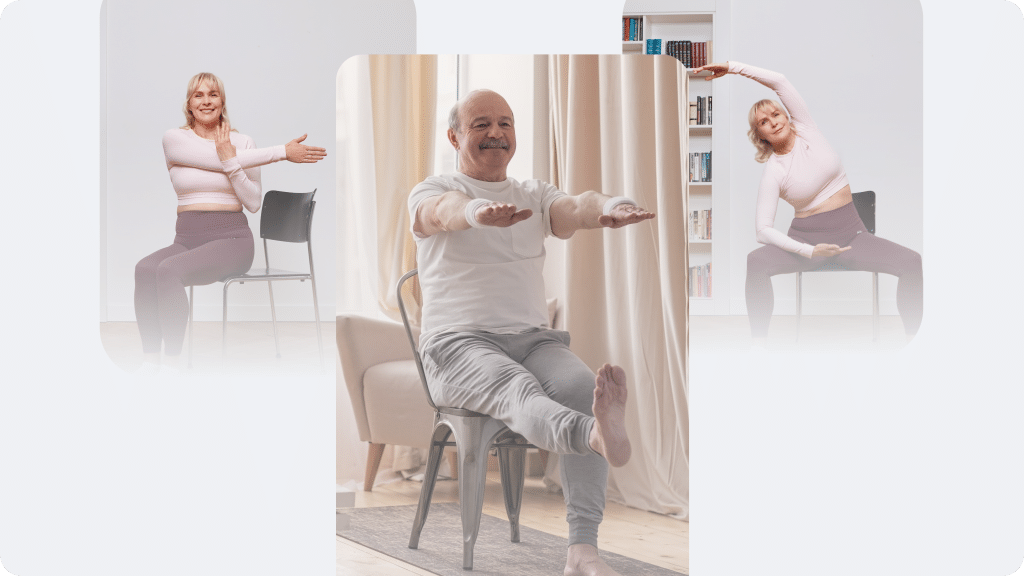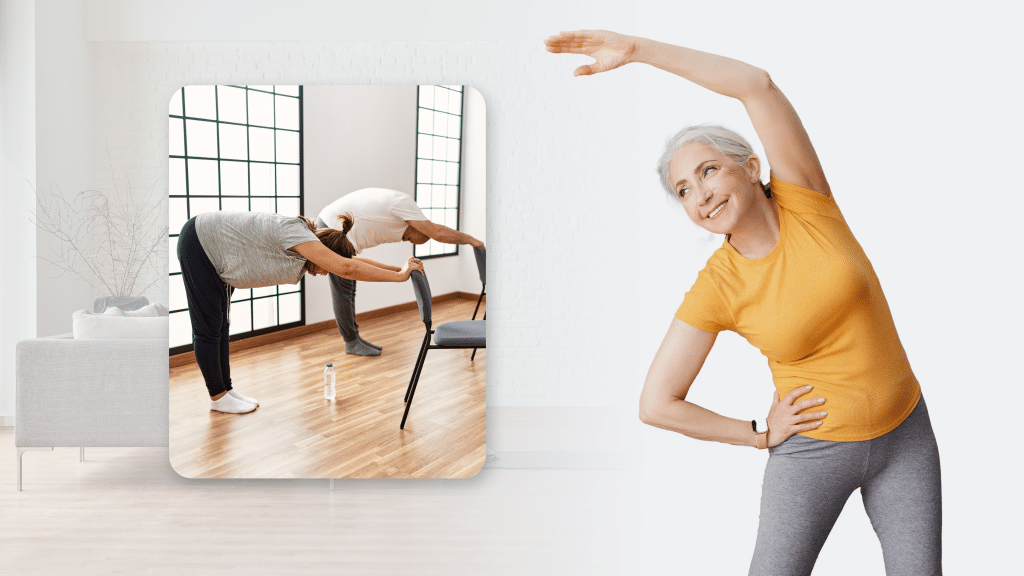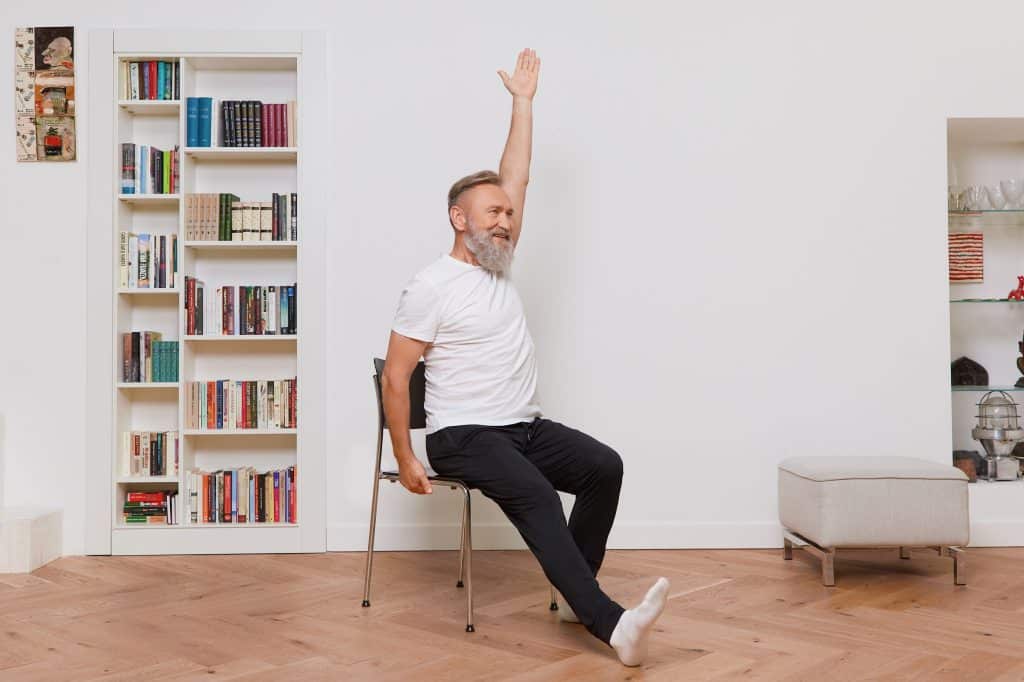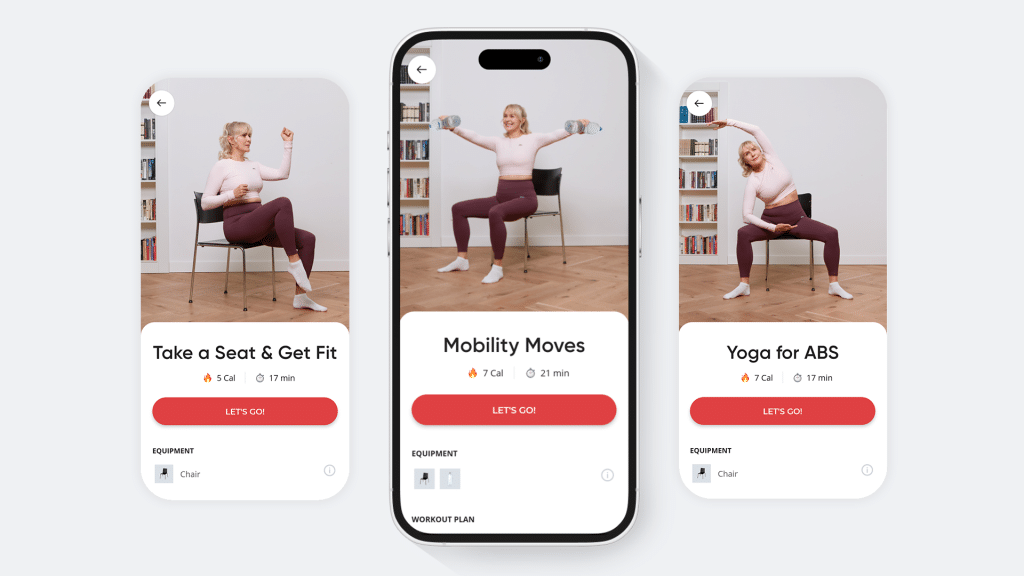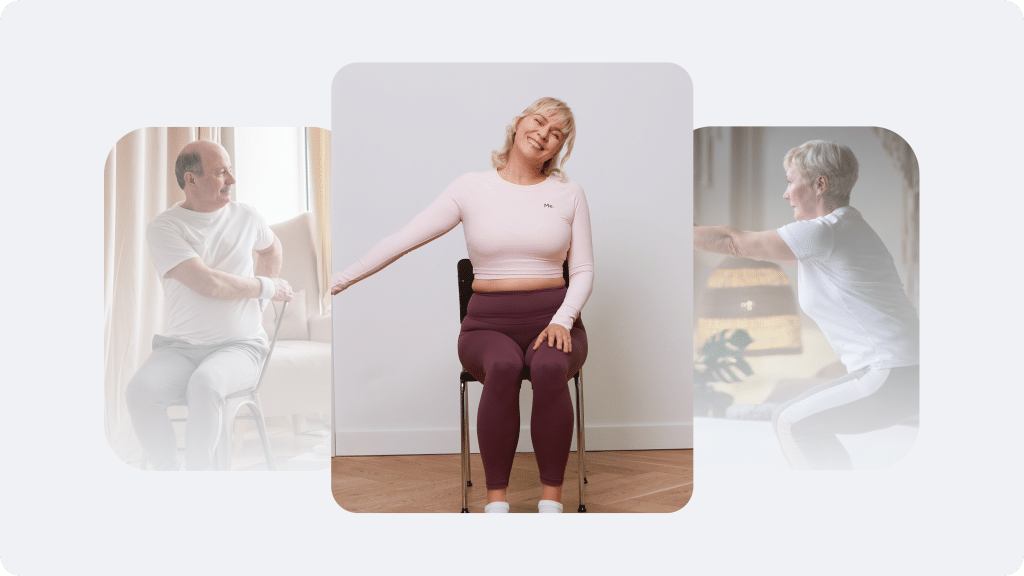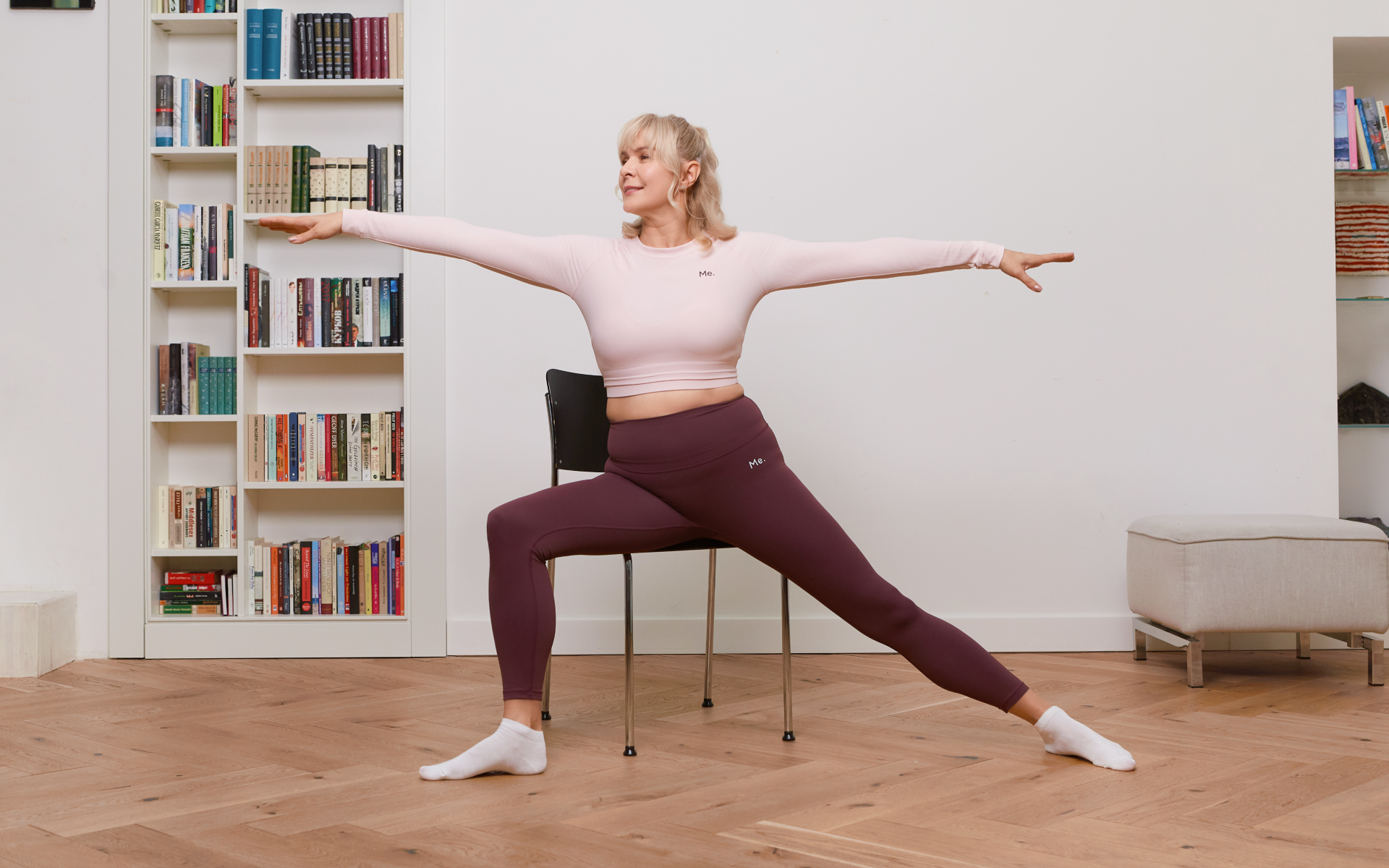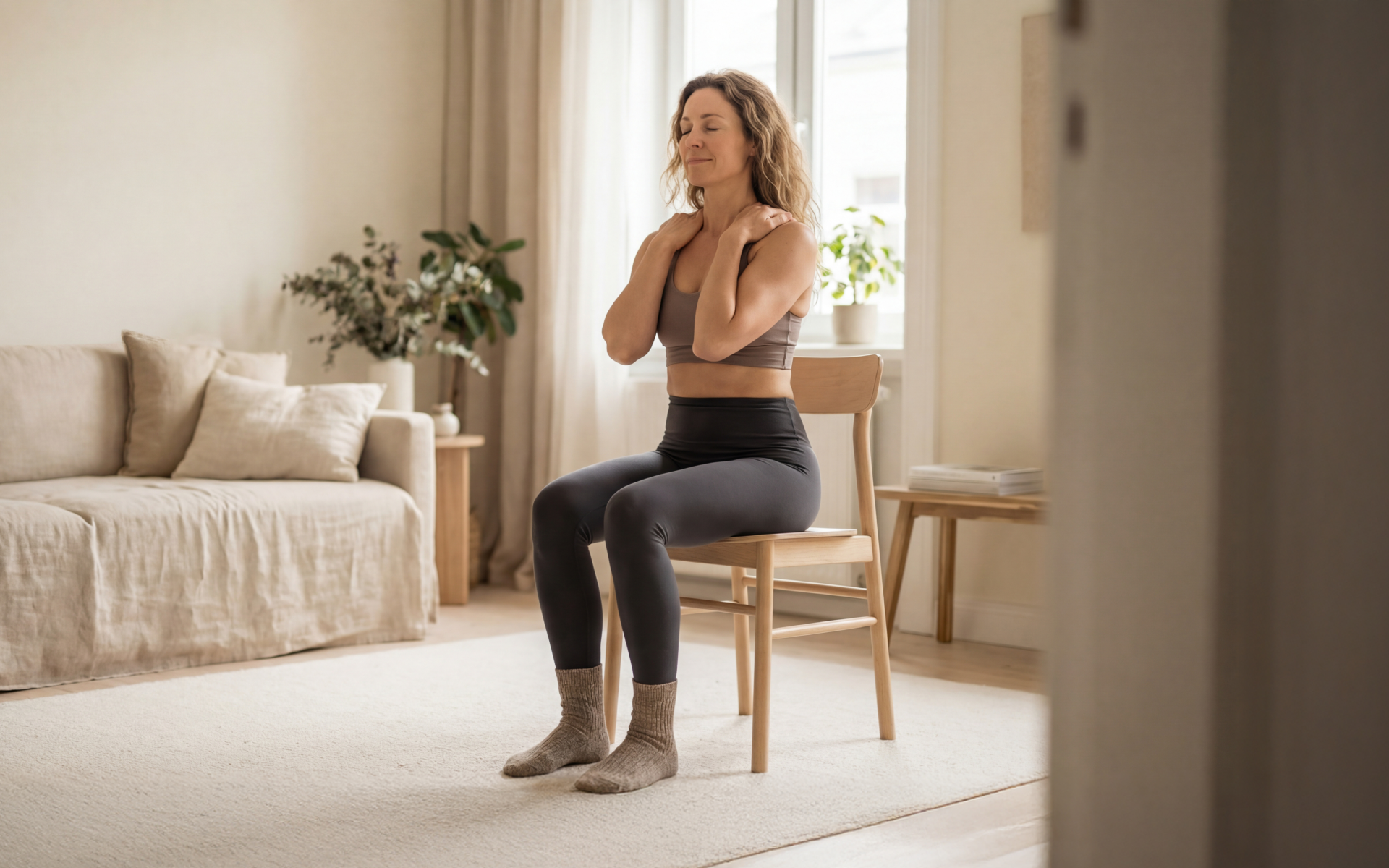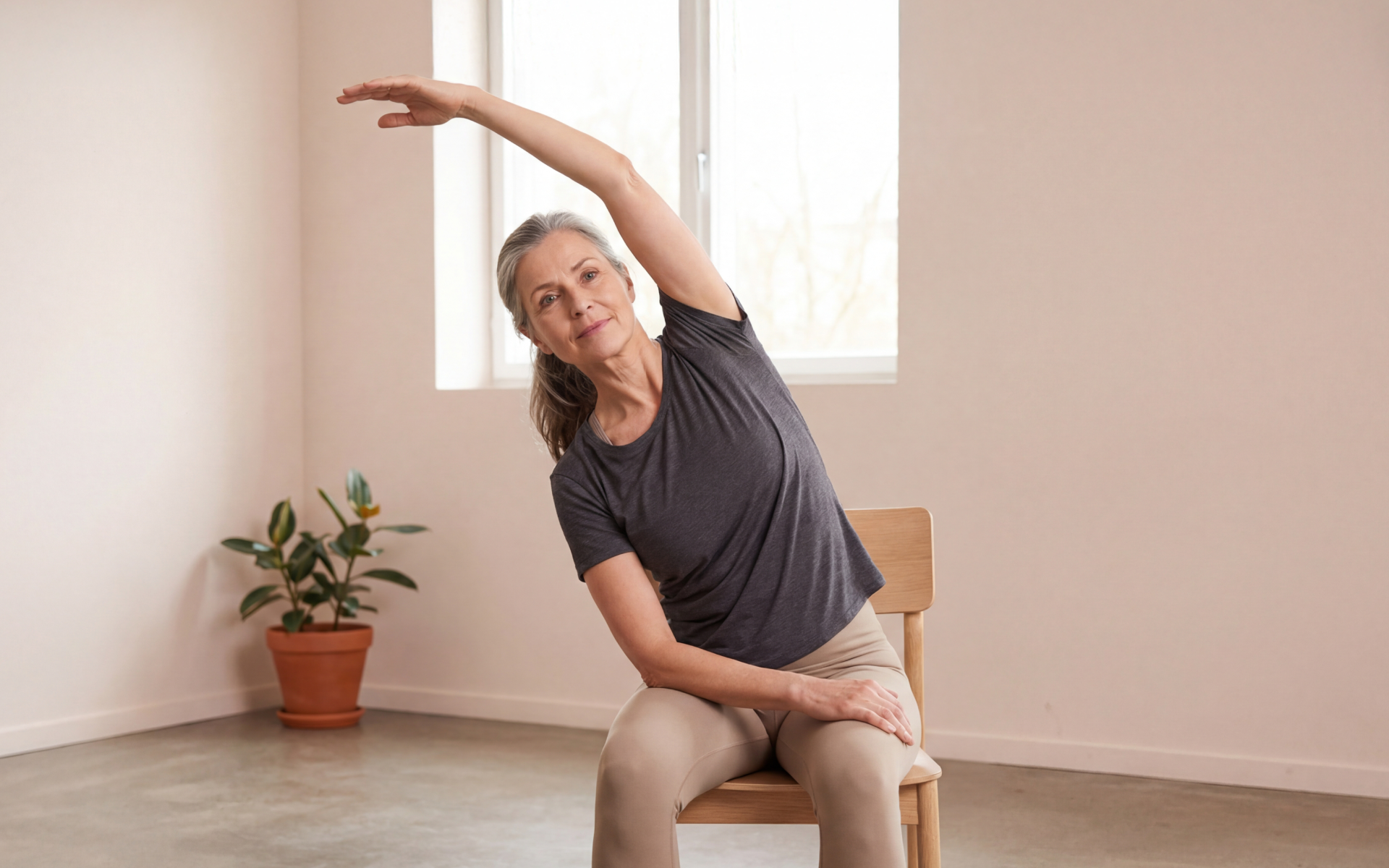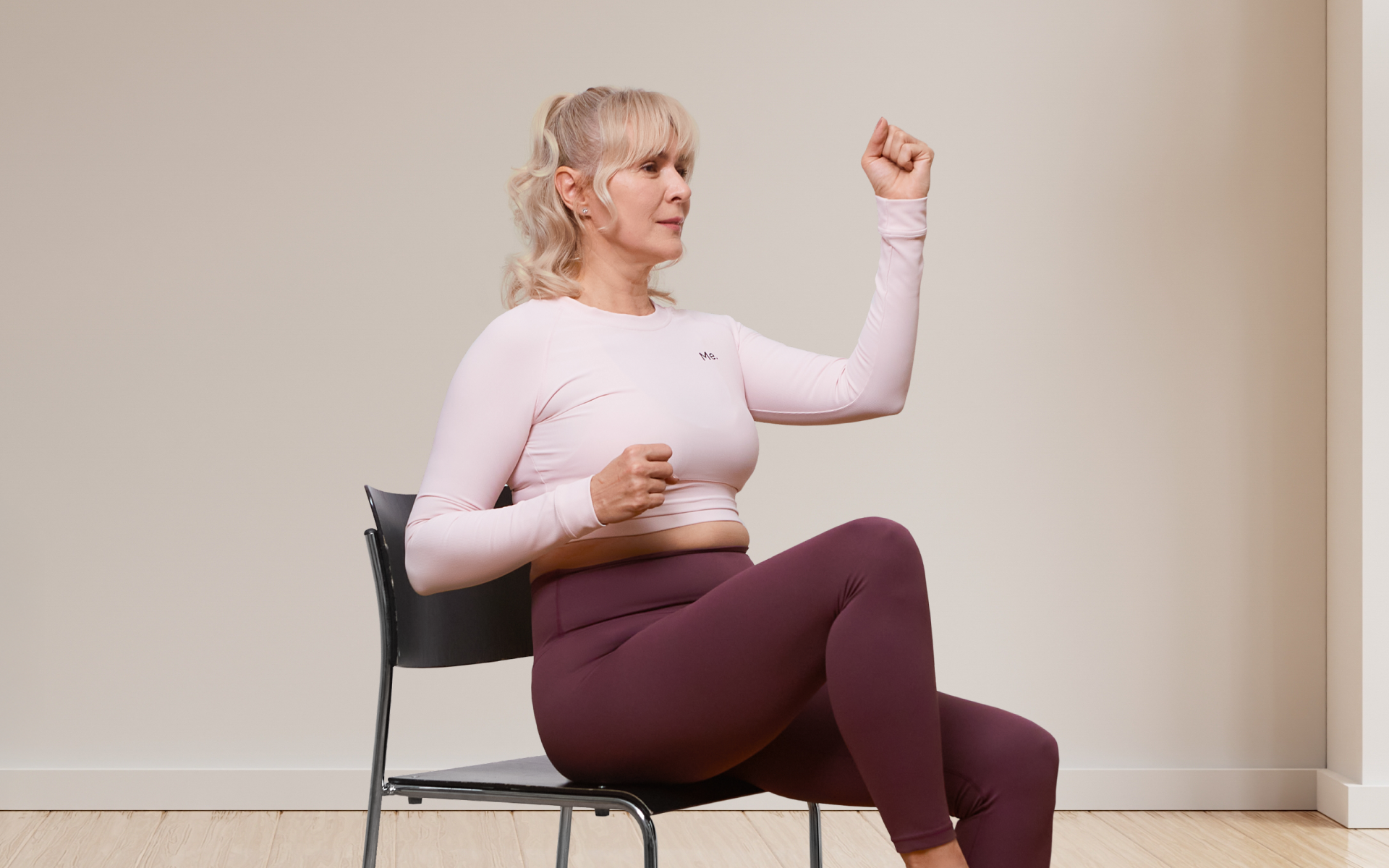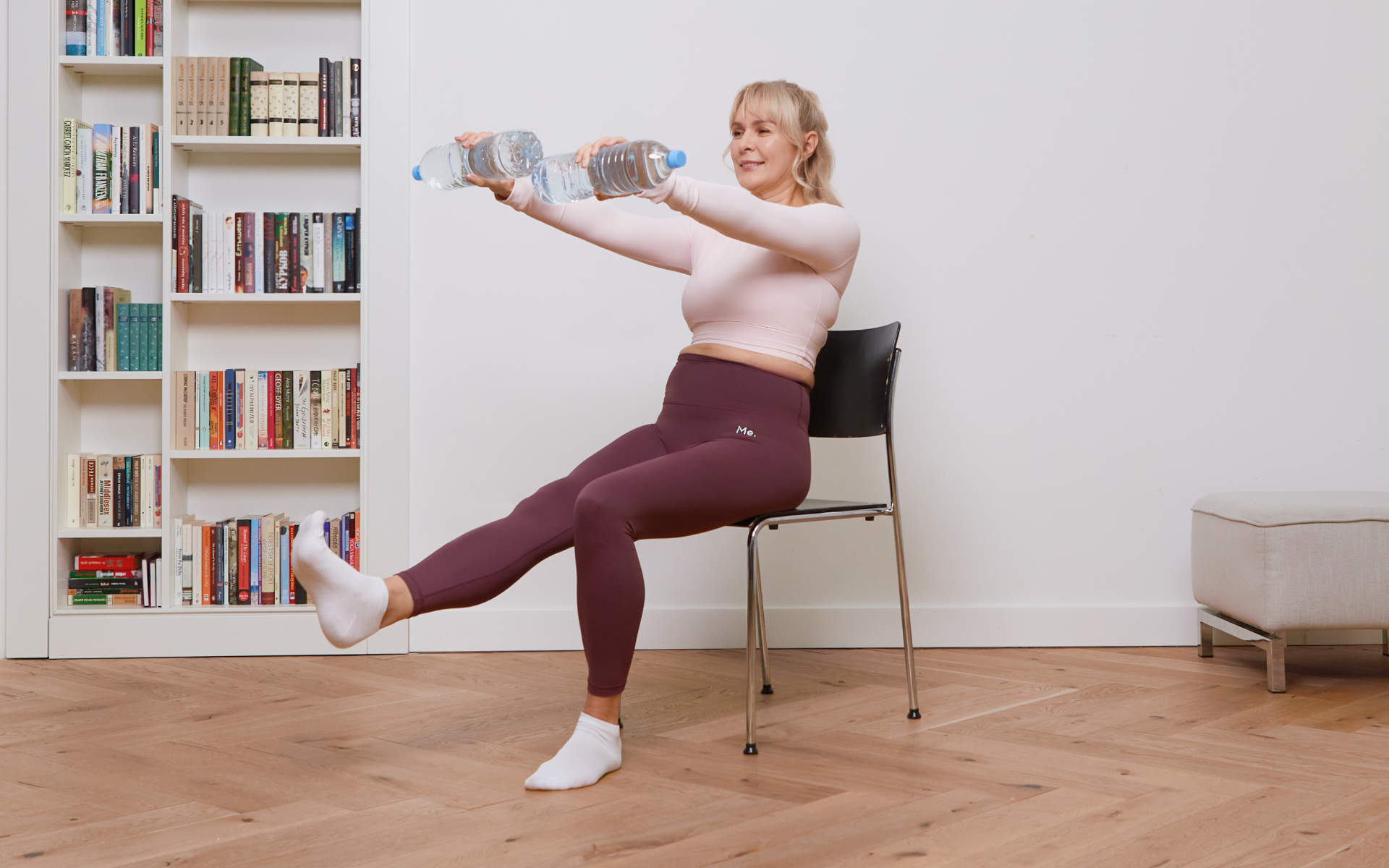Imagine being able to reach for that item on the top shelf without feeling any stiffness or pain in your shoulders, or being able to comfortably turn your head while driving without any tension in your neck.
Having good upper-body mobility is essential for everyday tasks and can also improve your overall quality of life.
Whether you’re an athlete who is looking to enhance your performance or someone who just wants to move more freely, these 10 upper-body mobility exercises can help you achieve your goal.
But first, what exactly is upper-body mobility? How do you know if you have good mobility or not? And most importantly, how can you improve it?
Let’s answer these questions and learn more about upper-body mobility and its importance.
What is Upper-Body Mobility?
Upper-body mobility refers to the range of motion and flexibility in your shoulders, arms, neck, and upper back. It means that you’re able to:
- Move your arms freely in different directions without any pain or discomfort
- Reach and stretch without feeling tightness or stiffness
- Rotate your shoulders, neck, and upper back without restrictions
- Control and stabilize your upper-body movements
- Perform daily tasks and physical activities without limitations
- Maintain good posture and alignment in your upper body
- Avoid injuries and pain in your upper body
Several factors can contribute to poor upper-body mobility, but most of us experience it due to sedentary lifestyles and a lack of proper stretching and movement.
As many of us spend most of our days sitting in front of a computer or hunched over our phones, our upper-body muscles become tight and weak, which leads to limited mobility.
How Do You Check Upper-Body Mobility?
There are a few simple tests you can do to check your upper-body mobility. While performing these tests, you’ll be checking whether you can move your upper body freely, without any pain or restrictions.
You’ll also be looking for any imbalances or asymmetries in your mobility. Here are three tests you can try:
Shoulder Mobility Tests
These tests assess your mobility in the shoulders and upper-back area.
If you wish to free yourself from all the extra pounds that have been weighing you down for way too long, start using the BetterMe: Health Coaching app and overhaul your entire life!
Shoulder Flexion Test
- Stand with your feet shoulder-width apart.
- Extend your arms straight in front of you.
- Slowly raise your arms overhead as far as you can without bending your elbows or arching your back.
Your arms should be able to reach close to your ears without pain. Look for smooth movement without any jerks or stiffness.
Shoulder Rotation Test
- Stand with your feet shoulder-width apart.
- Bring your arms to 90 degrees of shoulder abduction and 90 degrees of elbow flexion, making a goal post shape.
- Slowly rotate your arms at the shoulders, reaching back as far as you can without discomfort. Then do the same while rotating your arms forward and down.
Your goal should be to reach at least 90 degrees of external shoulder rotation (forearms perpendicular to the ground with hands pointed straight up) and 70-90 degrees of internal shoulder rotation (hands almost perpendicular to the ground with hands pointed straight down). Again, look for smooth and pain-free movement. Note any difference in range of motion between the right and left shoulders.
Read more: 5 Flexibility Exercises for a More Supple You
Neck Mobility Test
These tests assess your mobility in the neck area.
Neck Rotation Test
- Sit or stand with your head facing forward.
- Slowly turn your head to the left, trying to bring your chin over your left shoulder.
- Repeat on the right side.
You should be able to comfortably turn your head without any pain or restrictions and your nose should be able to get almost in line with your shoulder.
Neck Flexion and Extension Test
- Sit or stand with good posture.
- Slowly tilt your head forward, bringing your chin to your chest.
- Return to the starting position.
- Slowly tilt your head backward, looking up toward the ceiling.
The movement should be smooth and without discomfort. Your chin should touch or come close to your chest during flexion.
Upper Back (Thoracic) Mobility Tests
These tests assess your mobility in the upper-back area.
Thoracic Extension Test
- Sit on a chair or bench with an upright posture, keeping your feet flat on the ground.
- Place your hands behind your head with your elbows out to the sides.
- Slowly arch your upper back, pushing your chest forward and bringing your shoulder blades together.
You should be able to extend back over the backrest of the chair without pain or discomfort.
Thoracic Rotation Test
- Start in a seated position with an upright posture.
- Cross one arm over your chest and place it on the opposite shoulder.
- Slowly rotate your upper body to the same side as the crossed arm.
You should be able to comfortably rotate your upper body without any pain or restrictions. Your hips and lower back should remain stable during this movement.
How to Get a Flexible Upper Body
Getting a flexible upper body requires a multi-faceted approach and you must incorporate proper stretching, strengthening, and movement into your daily routine. Here are a few tips to help you improve your upper-body mobility:
Stretch Your Upper-Back Muscles Frequently
Stretching is one of the most effective ways to improve upper-body mobility and flexibility (1). Pick a few neck, shoulder, and upper back stretches and add them to your daily routine. Focus on holding each stretch for at least 30 seconds and performing them regularly.
Strengthen Your Upper-Body Muscles
Weak muscles can also contribute to poor mobility. Include exercises that strengthen your upper-body muscles such as push-ups, rows, and overhead presses. Building strength in these areas will improve your mobility and help prevent injuries.
Change Your Posture Frequently
Contrary to outdated medical advice and the general media, no posture is inherently “good” or “bad”. Research has shown that postural variability is the most important factor for reducing posture-related pain, injury, and dysfunction. Therefore, no modality or form of exercise can help you achieve “good” posture, as there is no such thing. However, postural awareness, postural control, and postural stability are all improvable factors that exercise and education can help with. These things contribute to avoiding prolonged postures that may lead to problems.
By varying your posture at least every 30 minutes and getting up and moving at least every hour, you’ll significantly reduce your risk of posture-related pain, strain, and dysfunction.
One trick to help improve posture is to set reminders throughout the day to check in with your posture. You can even use a posture-correcting device or app if necessary.
Move Frequently Throughout the Day
Sitting for extended periods can cause stiffness in the upper body (3). Set reminders to get up and move around every hour. A simple walk around the office or a few stretches can help keep your upper body from getting too tight.
What Are Some Upper-Body Mobility Exercises?
Some upper-body exercises to improve your mobility include:
1. Shoulder Circles
- Stand with your feet shoulder-width apart.
- Extend your arms out to the sides at shoulder height.
- Make small circles with your arms, gradually increasing the size of the circles.
- After 10-15 circles, reverse the direction.
2. Wall Angels
- Stand with your back against a wall with your feet a few inches away from the wall.
- Press your lower back, upper back, and head against the wall.
- Raise your arms to form a “W” shape with your elbows bent.
- Slowly slide your arms up to form a “Y” shape, keeping your back and arms in contact with the wall.
- Return to the “W” position and repeat.
- Ensure your lower back remains against the wall throughout the movement.
- Perform the exercise slowly for better control.
3. Shoulder Rotations (Using a Band)
- Hold a resistance band or broomstick with both hands, wider than shoulder-width apart.
- Raise the band or stick overhead and slowly move it behind your head and back as far as you can without pain.
- Return to the starting position.
- Keep your arms straight throughout the movement.
- Adjust the width of your grip based on your flexibility.
4. Neck Tilts
- Sit or stand with an upright posture.
- Slowly tilt your head to the right, bringing your ear toward your shoulder.
- Hold for a few seconds, then return to the starting position.
- Repeat on the left side.
- Keep your shoulders relaxed and down.
- Avoid lifting your shoulders as you tilt your head.
5. Neck Rotations
- Sit or stand with an upright posture.
- Slowly turn your head to the right as far as you can.
- Hold for a few seconds, then return to the starting position.
- Repeat on the left side.
- Keep the movement smooth and controlled.
- Avoid forcing the rotation.
6. Cat-Cow Stretch
- Start on your hands and knees in a tabletop position.
- Inhale, arch your back, and lift your head and tailbone toward the ceiling (cow pose).
- Exhale, round your back, and tuck your chin to your chest (cat pose).
- Continue to alternate between these two poses.
- Synchronize your movements with your breath.
- Move slowly and mindfully.
7. Thread the Needle
- Start on your hands and knees in a tabletop position.
- Reach your right arm under your body and across to the left, lowering your shoulder and head to the floor.
- Hold for a few seconds, then return to the starting position.
- Repeat on the left side.
- Keep your hips stable as you reach.
- Perform the movement gently to avoid strain.
8. Thoracic Extensions over a Foam Roller
- Sit on the floor with a foam roller placed horizontally behind you.
- Lie back over the foam roller, positioning it under your upper back.
- Support your head with your hands and gently extend your back over the roller.
- Roll slightly up and down to target different areas of your upper back.
- Keep your movements controlled and avoid overextending.
- Focus on relaxing your upper back over the roller.
9. Arm Crosses
- Stand with your feet shoulder-width apart.
- Extend both arms out to the sides at shoulder height.
- Slowly cross your arms in front of your chest, wrapping one arm over the other.
- Hold the position for a moment, then return to the starting position.
- Repeat the crossing motion for 10-15 reps.
- Ensure your movements are smooth and controlled, focusing on stretching the shoulder blades.
10. T-Spine Rotation
- Start in a tabletop position on your hands and knees.
- Place your right hand behind your head, keeping your elbow bent out to the side.
- Engage your core, and slowly rotate your torso to the right, bringing your elbow toward the ceiling.
- Hold for a few seconds, then return to the starting position.
- Repeat on the left side.
- Perform 5-10 repetitions on each side, maintaining a steady breath throughout the exercise.
Who Needs an Upper-Body Flexibility Program?
An upper-body flexibility program is beneficial for anyone who is looking to improve their range of motion and prevent injuries. It can be particularly helpful for individuals who:
- Sit for extended periods, such as office workers or students.
- Participate in sports or activities that involve repetitive upper-body movements, such as swimming or weightlifting.
- Experience tightness or discomfort in their shoulders, neck, or upper back.
- Want to maintain an upright posture and prevent postural issues.
- Are recovering from an injury or surgery involving the upper body.
- Live a sedentary lifestyle and want to improve their overall mobility.
The best way to determine if an upper-body flexibility program is right for you is to consult a healthcare professional or certified fitness trainer. They can assess your current level of flexibility and provide personalized recommendations based on your goals and needs.
BetterMe: Health Coaching app helps you achieve your body goals with ease and efficiency by helping to choose proper meal plans and effective workouts. Start using our app and you will see good results in a short time.
What Is the Difference Between Stretching and Mobility Exercises?
The difference between stretching and mobility is often misunderstood. While both are important for improving flexibility, they have different purposes and benefits.
Stretching
Stretching involves elongating a specific muscle or group of muscles to improve their length and range of motion. It typically involves holding a static position for an extended period, such as 30 seconds or more. The goal of stretching is to increase muscle elasticity, relieve tension, and improve overall flexibility (4).
Regular stretching can also help prevent injury by preparing the muscles for physical activity. Some common types of stretching include static, dynamic, and proprioceptive neuromuscular facilitation (PNF) stretches (4).
Mobility Exercises
Mobility refers to the ability to move freely and easily through a range of motion. It involves muscle flexibility and joint health and stability. Mobility exercises aim to improve the function of joints, muscles, and connective tissue to enhance overall movement patterns and performance (5).
Unlike stretching, mobility exercises are often dynamic and involve moving through various positions or ranges of motion. They can help prevent injury, improve athletic performance, and support daily activities.
While some calisthenics exercises can help improve mobility, it’s not solely focused on mobility training. A dedicated mobility program will specifically target joint health and range of motion through a variety of exercises and techniques. Calisthenics is a form of body weight exercise that involves using your own body weight as resistance to build strength, endurance, and flexibility (6). You cannot force your body to be flexible without risking injury. Flexibility takes time and consistent effort to improve. Trying to force yourself into a stretch beyond your current range of motion can cause strain or tears in the muscles, ligaments, or tendons. It’s important to listen to your body and progress gradually when working on increasing flexibility. A non-flexible person can become more flexible with consistent practice and proper techniques. Flexibility isn’t limited to genetics and anyone can improve their range of motion with dedication and patience. However, some individuals may have a higher natural level of flexibility due to factors such as joint structure or previous training in activities that require flexibility. The fastest way to fix tight muscles is by incorporating a combination of stretching, foam rolling, and mobility exercises into your routine. These techniques can help release tension and improve flexibility in the targeted muscle groups. It’s important to remember to progress gradually and listen to your body during these exercises in order to avoid injury. In addition, addressing any underlying issues such as poor posture or muscle imbalances can help alleviate tightness. If you’re experiencing chronic or severe muscle tightness, it’s best to consult a healthcare professional to get personalized recommendations. Frequently Asked Questions
Is calisthenics a mobility program?
Can I force my body to be flexible?
Can a non-flexible person become flexible?
What is the fastest way to fix tight muscles?
The Bottom Line
Having good upper-body mobility is essential for performing daily tasks and physical activities without limitations.
By regularly performing these tests and incorporating stretching, strengthening, and proper movement into your routine, you can improve your upper-body mobility and prevent injuries and pain.
Remember to listen to your body and start slowly if you’re new to exercising or have any pre-existing conditions. With consistency and patience, you can work toward a more flexible upper body.
DISCLAIMER:
This article is intended for general informational purposes only and does not serve to address individual circumstances. It is not a substitute for professional advice or help and should not be relied on for making any kind of decision-making. Any action taken as a direct or indirect result of the information in this article is entirely at your own risk and is your sole responsibility.
BetterMe, its content staff, and its medical advisors accept no responsibility for inaccuracies, errors, misstatements, inconsistencies, or omissions and specifically disclaim any liability, loss or risk, personal, professional or otherwise, which may be incurred as a consequence, directly or indirectly, of the use and/or application of any content.
You should always seek the advice of your physician or other qualified health provider with any questions you may have regarding a medical condition or your specific situation. Never disregard professional medical advice or delay seeking it because of BetterMe content. If you suspect or think you may have a medical emergency, call your doctor.
SOURCES:
- The importance of stretching (2024, health.harvard.edu)
- Guide to Good Posture: MedlinePlus (2017, medlineplus.gov)
- The dangers of sitting: why sitting is the new smoking (2022, betterhealth.vic.gov.au)
- CURRENT CONCEPTS IN MUSCLE STRETCHING FOR EXERCISE AND REHABILITATION (2012, ncbi.nlm.nih.gov)
- The Surprising Benefits of Performing Daily Mobility Exercises (2023, acefitness.org)
- The advantages of body-weight exercise (2024, health.harvard.edu)
